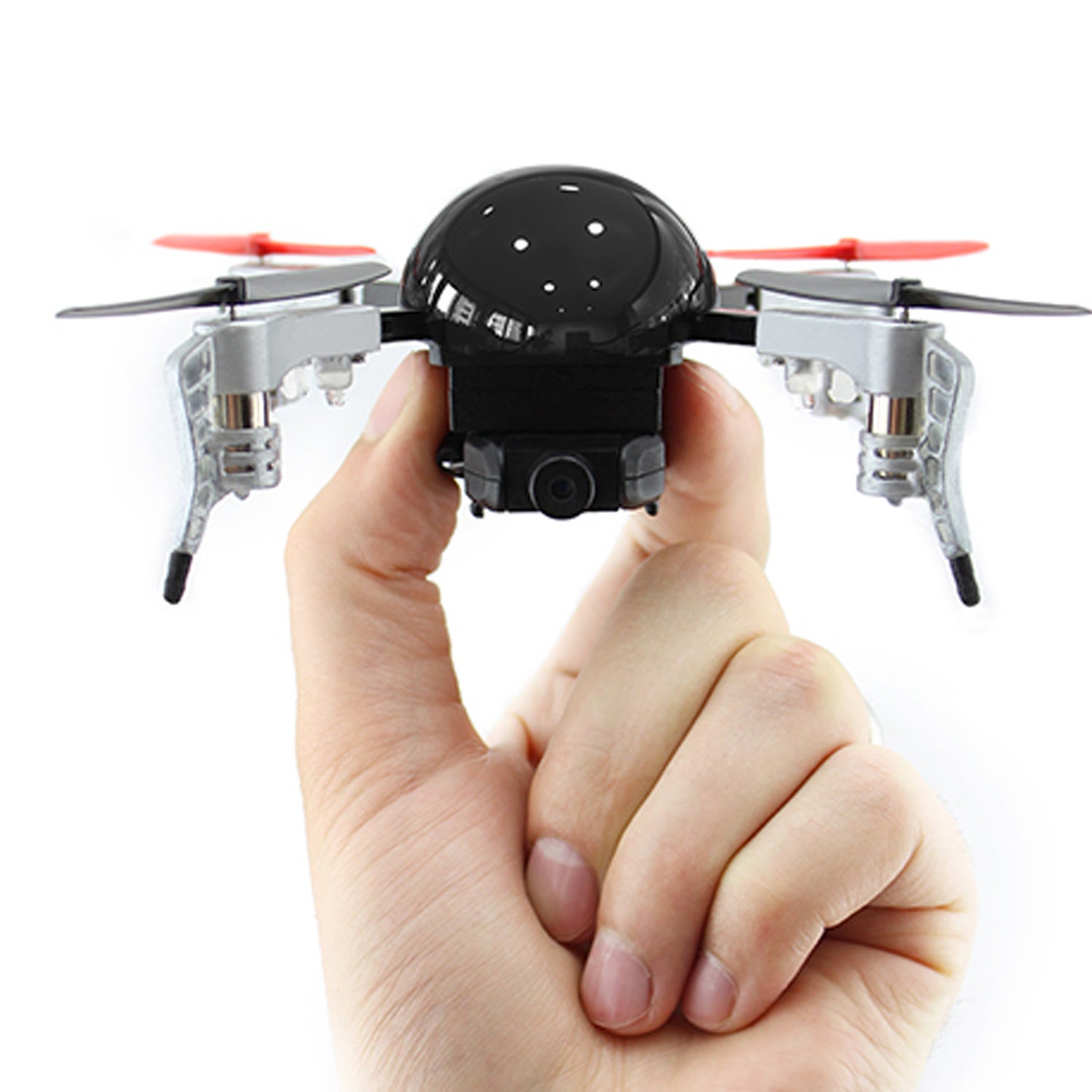You probably don’t own a drone yet. Up until now, you’ve figured:
1. They’re hard to fly.
2. They’re expensive.
3. Capturing video requires risking a $400 action cam in a crash.
All of which was true—until now. Enter the fist-size , a capable consumer UAV for $125.Â
Let’s talk about the specs, which are damned impressive for such a relatively inexpensive drone. The built-in camera shoots HD video at 1280×720 and 30 fps, which is less clarity than you get with GoPro’s basic $130 Hero. Still, considering the cost, it’s like having a pared-down GoPro that flies for no extra cash.
The 3.0 can stream video back to your phone, allowing you to see where the drone is flying. Invest in a cardboard , and you have your own immersive VR experience. You can also control the UAV through a remote control or your phone without the onboard camera.
The Microdrone 3.0 also comes with an autoleveling function—key for beginners. Most inexpensive drones are erratic, which means you crash more frequently. , the maker of the Microdrone, says its unit can be flown stably in winds up to 45 mph. That seems a bit far-fetched, but even if the autoleveling works only in moderately breezy weather, that’s a big added value.
For even more video stability, the drone will also be sold with an optional gimbal ($99 retail) that autolevels the footage, regardless of the copter’s position in the sky.
While the proof will be in the flying, if this tiny copter is 70 percent as good as promised, it will put a drone in the hands of anyone who wants one.
The UAV even has a stunt mode that allows the entire copter to invert—the rotors autorotate as the craft flips—and zoom around faster than 50 mph.
Finally, it’s extremely easy to assemble and fix. Extreme Fliers’ founder, , says they designed the Microdrone’s parts to be removable, like Legos. This goes beyond swapping out bent rotors or adding bigger ones for more lift (although this, too, is an option). Perhaps your bird snapped a rotor arm? No sweat. Just pop in a fresh one and keep flying. You’ll also have a simple plug-and-play option to add bigger motors so you can carry heavier loads.
That will, of course, require more battery power. Right now, battery life appears to be the Microdrone’s biggest issue: The drone can fly for only six minutes if you’re running the camera. Thankfully, spares will cost just $15, according to Extreme Fliers.
There are other limitations. It has a radio range of a modest 300 feet;Â the signal strength acts as a fence, preventing overflight of your controls. And still-image resolution is weak: max-100 kb shots have a blurry peak resolution of 1280×720 pixels. Good enough for Instagram, but not much more. For reference, a 2013 smartphone can snap 4,000-pixel-wide, 8 GB images that are suitable for framing. That said, Extreme Fliers says it plans to sell a more advanced camera in the future.
All that aside, the Microdrone is smashing records right now on Indiegogo, raising $338,000 in just six days, more than four times the initial goal of $75,000. It’s slated to go on sale this winter.
As for its competition when the Microdrone hits the market? There really isn’t any.
On Tuesday, Parrot debuted its answer to the Microdrone 3.0, but it doesn’t stack up spec-wise to Extreme Fliers’ offering. , which makes UAVs for agriculture and automotive uses as well as high-end consumer models, showcased two new inexpensive aerial drones, costing between $99 and $129, but they’re far less sophisticated than the Microdrone.
Neither comes with a controller—all flying is via phone-based app. Range is limited to 164 feet, top speed is 11.2 mph, and there’s no POV virtual-reality flying option. Video quality is rudimentary 480×640 VGA.
Of course, there are much more expensive drones than the Microdrone and with much greater capabilities. DJI’s amazing $999 has far greater range and better camera options. (We’ve been testing the Phanton 3 and will have a review up shortly.)
But that’s comparing a Honda to a Jaguar. The Phantom 3 is four times the price of the Microdrone 3.0.
So, while the proof will be in the flying, if this tiny rebuildable copter is 70 percent as good as promised, it will do what Kerswell says it should: put a drone in the hands of anyone who wants one—and force competitors like Parrot, DJI, and GoPro to make their flying toys even niftier.


